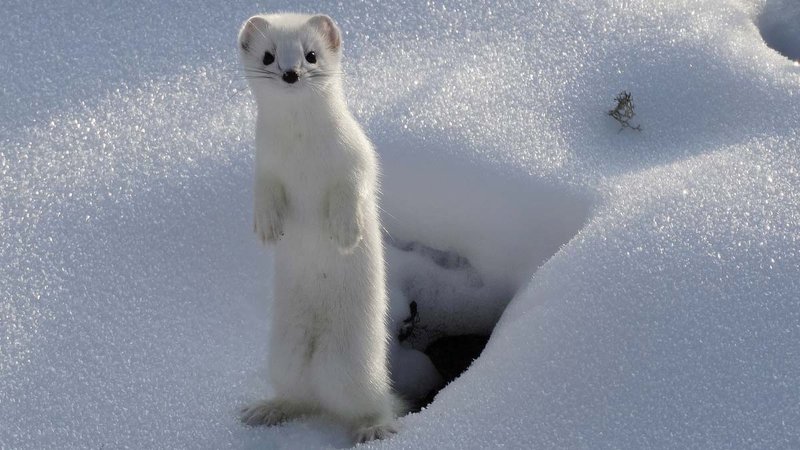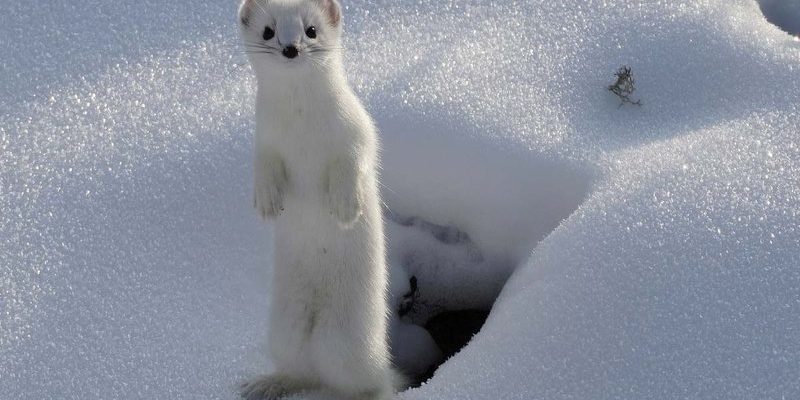
Ermines, also known as stoats, are remarkable little mammals that belong to the Mustelidae family. They have a unique way of life and play a crucial role in their ecosystems. Much like a tiny superhero, they possess skills that allow them to hunt effectively and evade predators. But when it comes to raising their young, they rely on instinct, resourcefulness, and a bit of help from their environment. So, let’s dive into the world of ermines and explore how these charming creatures nurture their young in the wild!
Ermine Mating and Nesting Habits
Before we discuss how ermines raise their young, it’s essential to talk about where it all begins—mating and nesting. Ermines typically mate between May and July. Interestingly, the female ermine can delay fertilization, meaning that the actual pregnancy doesn’t happen immediately. This clever adaptation ensures that babies are born at the right time—when food is plentiful.
Once a female decides to settle down and start a family, she looks for a safe place to build a nest. Common nesting sites include abandoned burrows or dense vegetation. Here, she can create a cozy environment for her future kits. The nest is lined with fur and plant materials, making it a warm sanctuary for the young.
In these carefully chosen spots, the ermine can keep an eye out for predators while ensuring her babies stay safe and hidden. Safety is a big concern during this time, as young kits are vulnerable. The mother must be vigilant, constantly monitoring the surroundings while managing her duties as a provider and protector.
The Birth of the Kits
After a gestation period of about 30 days, the moment finally arrives—the kits are born! Typically, a litter consists of about 4 to 6 kits, although it can range from 1 to 9 in some cases. These tiny furballs are born blind and helpless, relying entirely on their mother for warmth and nutrition.
The mother ermine dedicates herself to her newfound family. She nurses the kits for several weeks, providing them with the essential nutrients they need to grow strong. It’s a bit like running a small daycare; she has to attend to each of them while keeping a watchful eye on the outside world. Her maternal instincts are sharp, ensuring that the kits are safe and well-fed.
As the kits grow, they begin to develop their senses. They start opening their eyes after about two weeks, and by the time they’re four weeks old, they begin to explore their surroundings. Watching them take their first wobbly steps outside the nest is a heartwarming sight, one that showcases the resilience of nature.
Teaching Survival Skills
Once the kits are old enough to venture outside, their mother starts teaching them critical survival skills. This stage is pivotal, as the world outside their cozy nest can be harsh and unforgiving. Mother ermines are patient teachers, guiding their young as they learn how to hunt and evade danger.
At first, you might catch her bringing back small prey like insects or rodents to show the kits how it’s done. She demonstrates techniques for stalking and pouncing, ensuring they grasp what it takes to be a successful hunter. This hands-on approach is much like a coach training their athletes— it requires time, persistence, and a firm yet nurturing hand.
As the kits refine their skills, they start to mimic their mother’s movements. You might see them practicing their agility in the grass or play-fighting with each other. This playful behavior serves as both practice and bonding time. It’s a beautiful reminder that learning often happens through play, especially in the animal kingdom.
The Role of the Environment
The environment plays a significant role in the success of ermines raising their young. They typically inhabit areas like forests, grasslands, and tundra, where they can find sufficient cover and abundant food sources. These habitats provide the perfect backdrop for parenting, allowing them to dodge predators while raising kits.
Ermines often face challenges like changing seasons and food scarcity. During harsher months, they need to adapt quickly to ensure their young survive. For instance, when food is scarce, the mother might have to travel further for meals, leaving the kits hidden in their nest. This is a critical time, as the kits must learn to wait patiently without drawing attention to themselves.
Additionally, their white winter coats help them blend in with the snow, making it easier to hunt and harder for predators to spot them. The environment isn’t just a backdrop; it’s a vital player in the drama of survival. The ability to adapt to these changes is crucial for the ermines, reminding us how interconnected and dynamic nature can be.
Independence and Leaving the Nest
As summer approaches and the kits reach around 10 weeks old, they begin to gain more independence. At this stage, they might spend more time away from their mother, honing their hunting skills and learning to navigate their surroundings. This newfound independence is exciting but also a little bittersweet for the mother. After all, she has nurtured them from tiny, helpless babies to confident young hunters.
Eventually, the time comes when the kits will leave the nest entirely to carve out their own territories. This moment is a natural part of their development, emphasizing the cycle of life. It’s like sending your kids off to college; you’ve prepared them as best as you can, but now they need to find their way in the world.
Once they leave, they face new challenges. They must establish their own territory and learn to thrive without their mother’s guidance. It’s a tough world out there, but the skills they’ve learned will help them succeed. The cycle continues, with the hope that one day, they’ll return to raise their young in the same way their mother did.
The Importance of Ermines in Ecosystems
In the grand tapestry of nature, ermines play an essential role. They are skilled predators, helping control populations of small mammals and insects. By keeping these populations in check, they contribute to the overall health of their ecosystems.
As they raise their young, they ensure that future generations of ermines continue this cycle. Think of it as a balancing act; a healthy population of ermines means a more stable environment. They’re not just cute little creatures; they’re vital players in maintaining ecological balance.
Additionally, ermines are a food source for larger predators, further highlighting their importance in the food chain. Each role in the ecosystem is interconnected, and understanding how ermines raise their young provides insight into the complexities of nature.
In summary, ermines are not just fascinating creatures; they are dedicated parents who navigate the challenges of raising their young in the wild with skill and determination. From choosing the right nesting spot to teaching their kits vital survival skills, the entire process is a testament to the resilience of nature.
By looking at how ermines raise their young, we gain a deeper appreciation for these animals and their role in the ecosystem. Their journey from tiny kits to independent hunters is a remarkable tale of growth, survival, and the continuation of life. So, the next time you spot an ermine darting through the underbrush, remember the incredible story of parenting that unfolds behind the scenes.

